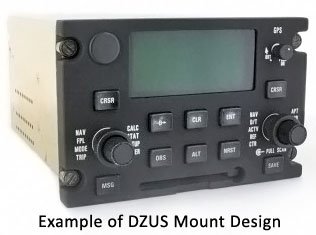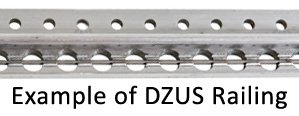What is DZUS Mounting?
The DZUS fastener was invented by William Dzus (pronounced "Zeus") sometime between 1932 and 1935. William began manufacturing the device from his garage in West Islip, NY and founded the Dzus Fastener Company within two years. The Dzus Fastener Company quickly earned a place in US history because every fastener made during World War II was for the use of the US Department of Defense.
The fastener is a quick acting, self-locking device designed for the aircraft industry. The fastener provides an interlocking connection to a compatibly designed DZUS rail. A DZUS mounting system is commonly used in helicopters and special mission type aircraft, but can be found in corporate and commercial aircraft as well. This system allows installers to flush mount avionics quickly and easily, saving on valuable panel space and installation time.
A DZUS rail acts as a supporting frame for the panels or removable parts to be fastened. A rail is designed as a right angle, flat or dual sided T shape and consists of continuous holes and rigid wire for stud engagement. The rail is riveted to a support member and the stud panel rests against the strip face having the stud holes.
DZUS fasteners consist of a stud and coil spring captive in a steel cup. Stud locking action compresses the spring, exerting a clamping force on the fastened parts. When locked, the stud spiral engages the rigid wire on the DZUS rail.



The fastener is a quick acting, self-locking device designed for the aircraft industry. The fastener provides an interlocking connection to a compatibly designed DZUS rail. A DZUS mounting system is commonly used in helicopters and special mission type aircraft, but can be found in corporate and commercial aircraft as well. This system allows installers to flush mount avionics quickly and easily, saving on valuable panel space and installation time.
A DZUS rail acts as a supporting frame for the panels or removable parts to be fastened. A rail is designed as a right angle, flat or dual sided T shape and consists of continuous holes and rigid wire for stud engagement. The rail is riveted to a support member and the stud panel rests against the strip face having the stud holes.
DZUS fasteners consist of a stud and coil spring captive in a steel cup. Stud locking action compresses the spring, exerting a clamping force on the fastened parts. When locked, the stud spiral engages the rigid wire on the DZUS rail.



 Haz tu pregunta
Haz tu pregunta Faça sua pergunta
Faça sua pergunta